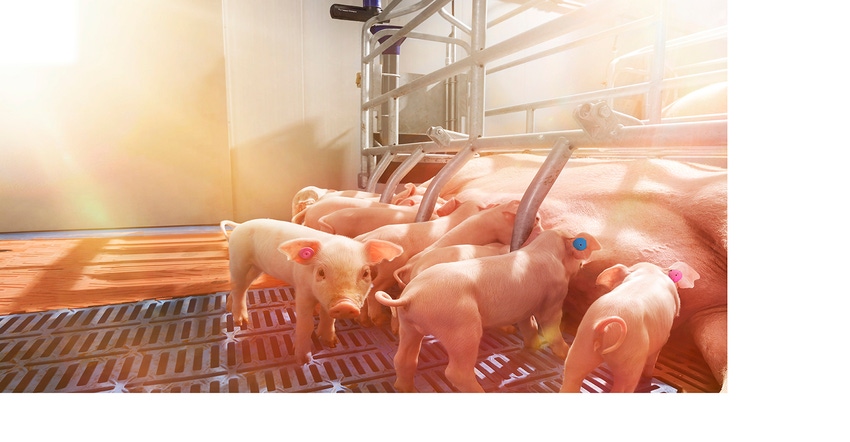Today’s sows can produce 30 piglets or more per year. But, why do just 20% of producers reach that milestone?
October 1, 2019

Sponsored Content
Today’s sows can produce 30 piglets or more per year. But, why do just 20% of producers reach that milestone?[1] High-performance breeding sows have leaner genotypes, larger mature body sizes and excellent reproductive health. However, with less backfat to use as a cushion for nutrient deficiencies during lactation, many sows lose body condition and fail to achieve full reproductive potential as a result.[2]
Genetics can only take breeding herds so far. Producers must also feed for performance to keep sows in optimal body condition during lactation for efficient rebreeding and higher farrowing rates. Automated and demand-driven farrowing feeding systems cater to each sow’s unique nutritional needs to help sows recover from farrowing, produce sufficient milk and rebreed faster.
Boost feeding frequency and sow performance
Nutrient requirements for sows are about three times higher during lactation than during gestation. Sows burn body mass when their nutritional needs aren’t met, impacting future performance. If sows use more than 15% of protein mass between the first and second parities, for example, they experience lower subsequent reproductive efficiency and lower litter weaning weights.[3]
Automated and responsive farrowing feeding can solve the negative nutrient balance problem by increasing feeding frequency. Sows receive snack-sized portions of fresh feed on a preset schedule. Sows can also “ask” for additional feed at any time by activating a trigger in the feeder with their snout with an optional farrowing feeding add-on.
How does this help? Increasing feeding frequency can stimulate appetite and improve overall feed intake.[4]
Feed for need, no sows are the same
Each lactating sow has unique nutritional needs based on body condition, age and other factors. For example, dietary requirements for lactating sows increase from the first to the sixth parity. There’s a 15-20% increase between the first and second parities alone.[5] A one-size-fits-all farrowing feed plan doesn’t work for feeding sows. It results in lost body condition and lower reproductive performance.
Automated farrowing feeding systems with an add-on that enables sows to ask for additional portions at any time can cater to sows’ unique nutritional needs. But, just as important, producers can also monitor individual sow feed intake data and adjust feed plans accordingly from anywhere using a smartphone, tablet or computer. Factors like sow weight, body condition, litter size and parity can be used to feed for each sow’s unique needs.
Visit farrowingfeeding.nedap-livestockmanagement.com to learn more about Nedap Farrowing Feeding with Nedap Activator.
[1] http://www.omafra.gov.on.ca/english/livestock/swine/facts/info_sows.htm
[2] https://pdfs.semanticscholar.org/9ac3/179b1c9716bd67e8b18b4c546a2f7f3d68f9.pdf
[3, 5] http://porkgateway.org/resource/lactating-swine-nutrient-recommendations-and-feeding-management
About the Author(s)
You May Also Like



